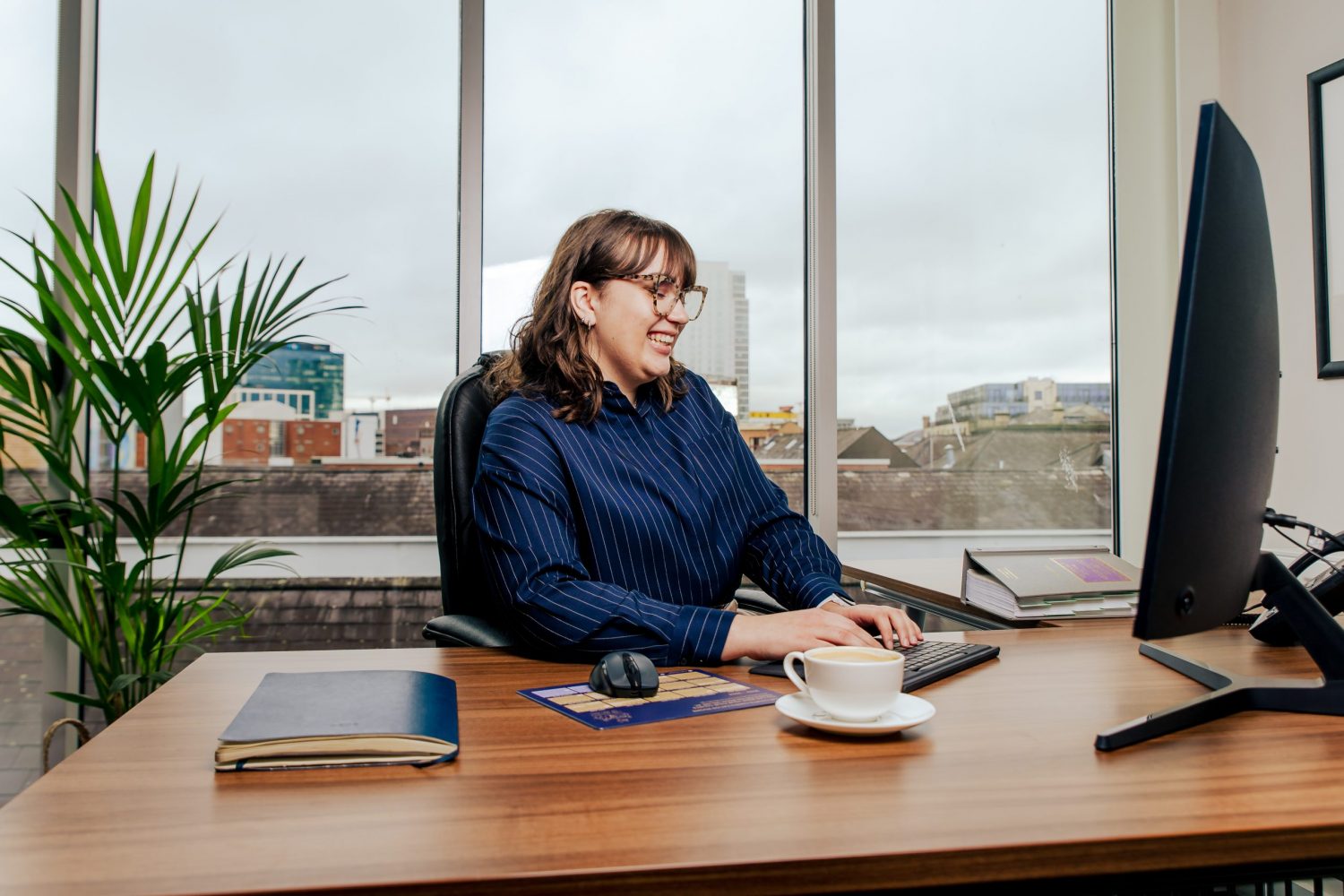Road Traffic Accidents involving HGVs like trucks, lorries, and other long vehicles, come with a separate set of risks. Personal injuries suffered as a result of lorry accidents are likely to be severe. Heavy Goods Vehicles are loaded with extra weight, meaning any lesser vehicle involved in the collision runs the risk of complete destruction.
The Antrim and Newtownabbey area is a major hub for the transport and storage industry. Since 2021, the area has had one of the highest concentrations of transport and storage business units in Northern Ireland. Its location provides easy access for logistics firms to distribute goods across the region.
If you have been in an accident with a lorry and you have been injured because of it, then you may be eligible to bring a claim for compensation against the lorry driver, company, or other responsible party. You may wish to contact Lacey Solicitors in Belfast for support.
The Constant Threat of HGV Accidents in County Antrim
HGV, lorry and truck accidents are unfortunately common on Belfast roads. We can cite countless road traffic accidents involving lorries in Co. Antrim in recent years.
A 60-year old man spent Christmas 2023 in hospital in critical condition after a collision with a lorry, the Irish Post reported. In January 2025 a motorcyclist died after colliding with a lorry. In September 2024 a man from Ballymoney died after colliding with a lorry. Sadly, these are just a few examples from a long list of lorry-related accidents in County Antrim.
When a car, motorcycle, or even a van collides with a lorry, the consequences are often severe due to the size and weight disparity. For the very vast amount of our clients who are lucky enough to talk away from these types of accidents, their injuries are often severe.
The Added Risks of Lorry and HGV Accidents
Road traffic accidents involving lorry, truck, or other heavy goods vehicles come with additional risks to car crashes between vehicles of a similar size. Our Mr Damian Mcgeady, Partner, was at one stage, himself a HGV driver. He knows all too well the dangers involved when driving a Heavy goods vehicle. These heightened dangers stem from several factors, including longer braking distances and the increased likelihood of mechanical failure due to the heavy loads that fully laden lorries transport.
According to our Partner Damian McGeady, the HGV Accident Risk Factors Include:
- Driver fatigue: Lorry drivers often work long hours, which can lead to reduced concentration and slower reaction times.
- Unsecured or shifting loads: Poorly secured cargo can move during sudden braking or sharp maneuvers, affecting vehicle stability.
- Overloaded vehicles: Exceeding weight limits increases the risk of mechanical failure and can amplify damage in collisions or rollovers.
- Vehicle size and structure: HGVs are taller and wider than most vehicles, meaning collisions can cause significantly greater damage to smaller vehicles.
- Reduced manoeuvrability in adverse conditions: The size and weight of HGVs make it harder to navigate inclement weather, including rain, ice, or high winds.
- Long stopping distances: Fully laden HGVs require considerably more distance to stop than cars or vans, increasing the likelihood of collisions in sudden traffic events.
- Blind spots: Large HGVs have substantial blind spots, particularly on the sides and rear, which can make it difficult for drivers to see smaller vehicles.
- Mechanical stress: Heavy loads place extra strain on brakes, tires, and suspension systems, raising the risk of failure if not properly maintained.
- Driver experience and training: Inexperienced or inadequately trained drivers may misjudge stopping distances, turning radii, or road conditions.
If you have been hit by a lorry or otherwise injured in a crash involving a heavy goods vehicle, then you should speak to a car crash lawyer. Wondering if you can claim for a lorry or HGV accident? Contact Lacey Solicitors right now to find out.
The Hierarchy of Road Users
The Highway Code introduces the hierarchy of road users, which places greater responsibility on those controlling vehicles capable of causing the most harm, such as HGVs. However, this principle does not automatically assign blame to the HGV.
Common Accidents with Large Vehicles
One common scenario that Lacey Solicitors deals with time and time again is when a HGV comes into another lane and causes an accident. Large vehicles with trailers often need to straddle two lanes to safely execute a turn or exit. According to Highway Code Rule 221:
“Large vehicles may need extra road space to turn. You should be aware of this when driving near them and give them plenty of room.”
This rule recognises the limitations of HGVs and requires other road users to adjust their driving accordingly but a HGV should at all times be aware of its surroundings. Liability only arises if the HGV is careless or negligent.
Seeking Compensation After a Truck, Lorry, or HGV Accident
If you were injured having been involved in an accident where the Truck or Lorry was negligent, you should contact a solicitor to speak about a compensation claim. Even where you believe you were partly at fault, you should always seek independent legal advice.
Lacey Solicitors are skilled in seeking compensation after car accidents, bike accidents, and for those injured by an HGV.
Personal Injury Solicitors in Co. Antrim
Lacey Solicitors are an established legal team capable of guiding you smoothly through the process of claiming compensation after a lorry accident. Empathetic and determined to understand your unique circumstances, we can help you prove that your accident happened due to negligence.
Call 028 9089 6540 today to speak to our legal team or read our guidance on Road Traffic Accidents for more information.

















